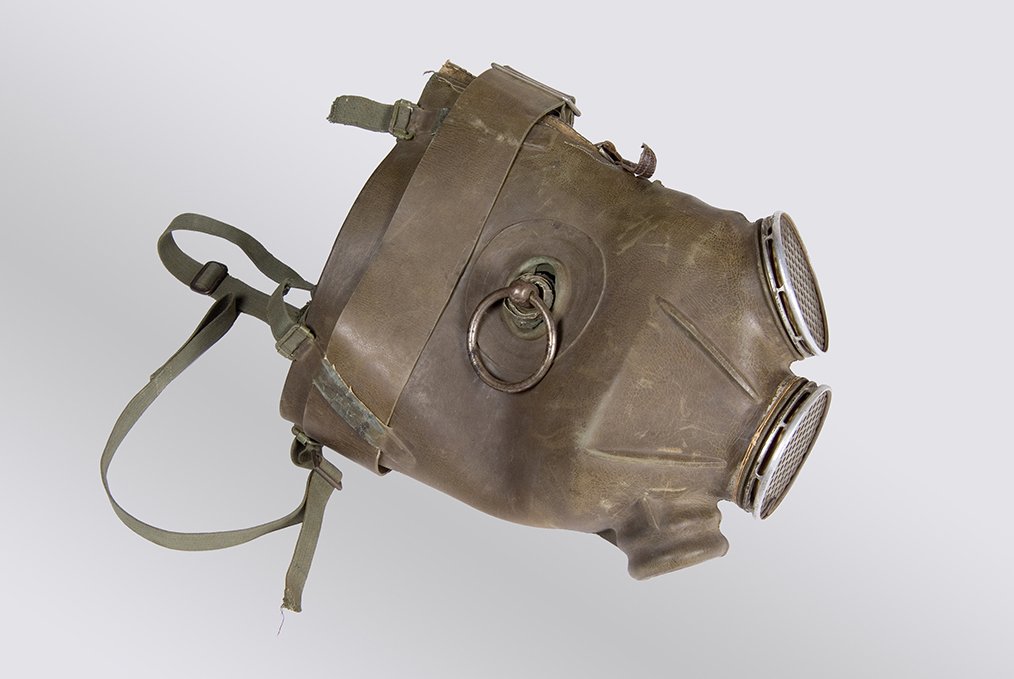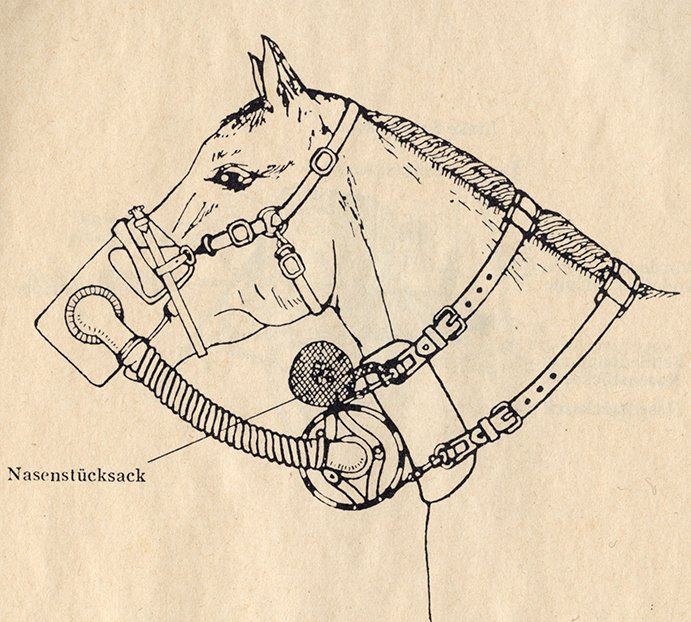Gas masks for horses
The curator's choice
World War I marked the first large-scale development of chemical and biological weapons. The German army carried out a chlorine gas attack near Ypres on 22 April 1915. This attack is also considered the first example of what we now refer to as 'chemical warfare'. Gas masks were used to protect both soldiers and their horses and dogs from these chlorine gas attacks. The filters offered protection against the most commonly used gases, such as chlorine gas and phosgene.

In the wake of this gas war, military authorities - even in the 'neutral' Netherlands - started working to defend themselves against such weapons. Experts, including veterinarians, were called in to help develop defensive tools and measures. These efforts were based on a One Health approach. The aim was to protect both people and animals, feed, water and food from the weaponised gases. Arie Klarenbeek (1888 - 1972) and a small team of fellow researchers at the Faculty of Veterinary Medicine conducted secret tests to find ways of protecting humans and animals from mustard gas.
Equine gas masks
The team developed guidelines and new protective equipment for military animals, especially horses, dogs and pigeons. This included a special equine gas mask, which was subsequently improved upon by other researchers around the world. The Utrecht University Museum's Veterinary Medicine Collection includes two equine gas masks produced during World War II: one from 1940 and one from 1944. The 1940 model has been part of the museum collection since 1959 and was provided by the Faculty of Veterinary Medicine's Zootechnical Institute.

For the nose only
A full equine gas mask consists of a nosepiece, harness, breathing hose, filter and the corresponding pouches. Equine gas masks essentially work like human gas masks, although their design is slightly different. Equine gas masks are obviously a lot larger, but - unlike masks for humans (or dogs) - generally only seal off the nose since horses do not breath through their mouth. Unlike gas masks for humans and dogs, horse gas masks also offered no protection for the eyes; the developers found that horses' eyes were much less sensitive to chemicals such as tear gas.

